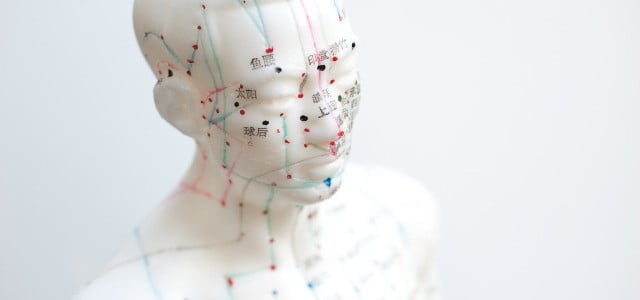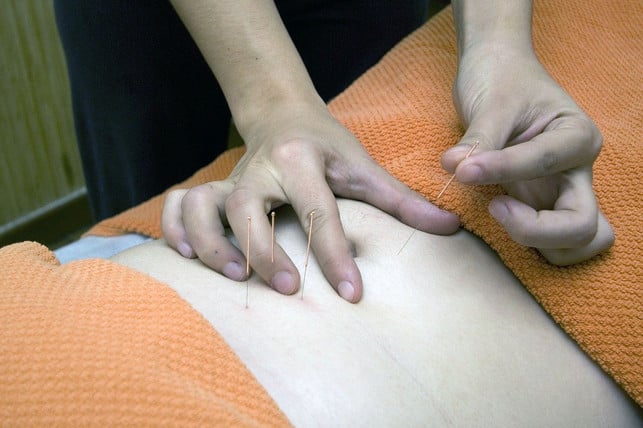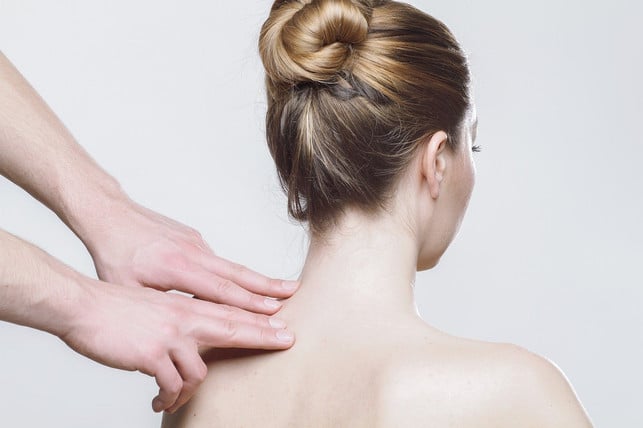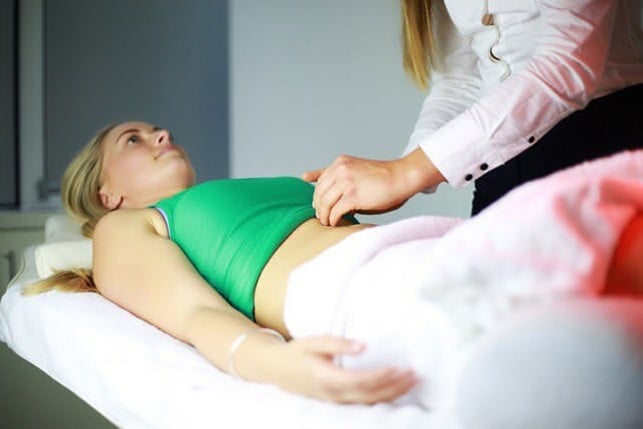
Acupuncture points are distributed throughout the body. Acupuncture was already used in ancient China to relieve symptoms. We’ll show you where the most important points are and how to stimulate them.
Acupuncture has been practiced for more than 3,000 years and is considered one of the most important therapeutic procedures in traditional Chinese medicine (TCM). The idea behind it: needle pricks in certain parts of the body are intended to stimulate the life energy “Qi” and release blockages in the energy flow. According to TCM, Qi flows along certain imaginary channels, the meridians, in our body and regulates important bodily functions. If this flow is disturbed, illnesses and complaints are said to occur.
In Western medicine, acupuncture is recognized as a complementary therapy. It is used to treat a wide range of health problems – even if its effectiveness has not been scientifically proven for all complaints, according to the AOK.
An acupuncture session lasts about 20 to 30 minutes. This is how long the needles remain in the body. Where the needles are placed depends on the symptoms. Since the needles are very thin and are only inserted a few millimeters deep, many people find the treatment to be beneficial. The treatment lasts several weeks and is carried out by appropriately trained doctors or alternative practitioners.
The most important acupuncture points: Here they are

(Photo: CC0 / Pixabay / Alterfines)
Traditional Chinese Medicine counts 365 acupuncture points. In addition, many other positions were defined as such. Acupuncture points are arranged at irregular intervals on the meridians. They are rarely located next to the guidelines – then they are referred to as extra points. Depending on which points are stimulated, acupuncture has a different effect on body functions and internal organs and is said to be able to alleviate various complaints. Therefore, in Chinese, each acupuncture point has a specific name that provides information about its effect.
In order to determine the acupuncture points, you first have to know where the meridians run. According to TCM, these are of different lengths – the longest path is the bladder meridian with 67 points. In addition to the twelve main meridians on which most of the points are located, there are a number of other guidelines. The main guidelines are divided into yin and yang meridians and are each named after the organs with which they are connected. The main meridians run through our body from the head to the extremities. Yin meridians run on the inside and front of the body, while Yang meridians are located on the outside and back. Since, according to TCM, the acupuncture points are networked via the meridians, the person treating the patient does not necessarily have to target the painful region in order to resolve a blockage.
Acupuncture points are divided into different groups. In addition to the classic acupuncture points, there are also:
-
Trigger points (or Ashi acupuncture points): These are very sensitive to pain and are located on or next to the meridians. According to TCM, every person has a different number of Ashi points. These are primarily stimulated to resolve disorders in the musculoskeletal system.
- Acupuncture is also used on a micro level, i.e. within specific areas of the body, which is why there are special acupuncture points on the ears, feet, hands and skull.
According to the Austrian public health portal, the physical existence of the meridians has not yet been proven. The BDI also points out that from a scientific perspective, the exact positioning of the acupuncture needles seems to be of little importance. The effect of acupuncture treatment was almost exactly the same in several studies, even if the needles were not placed exactly at the intended acupuncture points.
Acupuncture points: This is how they are determined

(Photo: CC0 / Pixabay / whitesession)
Acupuncture points can be determined based on prominent parts of the body. For example, the points are at a certain distance from bones, joints, wrinkles, tendon attachments or muscles.
To determine the correct distance, the width of the patient’s thumb is often used as a measurement. Since the points have a lower skin resistance, they can also be determined electronically. However, this method is rarely used by experienced therapists. In order to be able to identify acupuncture points accurately, appropriate training and experience is necessary.
Different acupuncture procedures
There are different types of acupuncture known. In addition to the classic variant, there are:
- Moxibustion, in which the needles are heated with smoldering moxa herb (from mugwort) before use.
- Acupressure (or pressure stimulation), which does not require any needles and stimulates acupuncture points through pressure or massage.
- Laser and electroacupuncture, which are among the newer procedures and also do not use needles. This method can be particularly beneficial if you are afraid of needles.
- Furthermore, microsystem acupuncture was developed from traditional acupuncture. In this procedure, the respective body part, for example the auricle, should reflect the entire body on a micro level. This makes acupuncture faster and easier.
Effectiveness of acupuncture: scientifically proven?

(Photo: CC0 / Pixabay / AusAcu)
The effectiveness of acupuncture is controversially discussed in science. According to the AOK, studies show that it can be more effective than standard therapies for chronic back pain and knee pain. Scientifically proven effects also include activation of blood circulation and stimulation of the immune system. In addition, according to studies, acupuncture can “tend to have a positive effect” on preventing migraines.
According to the BDI, there is currently a lack of sufficient evidence for other applications, such as smoking cessation or weight loss.
Exactly how acupuncture works also remains unclear. One theory is that inserting the needles releases the body’s own endorphins, which could provide short-term pain relief. However, studies do not show a consistent pattern that supports this assumption, according to Austria’s public health portal. In addition, detecting specific acupuncture points is difficult because treating any point can also have an effect.
There is also no clear distinction as to whether the effect comes from the specific acupuncture points, the needling itself or a placebo effect.
Note: Statutory health insurance companies cover the costs of some acupuncture treatments. It is best to ask your doctor about the possible benefits of this procedure in your case and whether the health insurance company will pay for it. Acupuncture treatments by alternative practitioners are excluded from being covered by health insurance.
Read more on Techzle\.com:
- Losing weight with acupuncture: what’s it?
- Tuina massage: This is how the Chinese massage technique works
- Massage oil: Relax naturally with homemade massage oil
Edited by Annika Reketat
** marked with ** or orange underlined Links to sources of supply are partly partner links: If you buy here, you are actively supporting Techzle\.com, because we then receive a small part of the sales proceeds. More info.